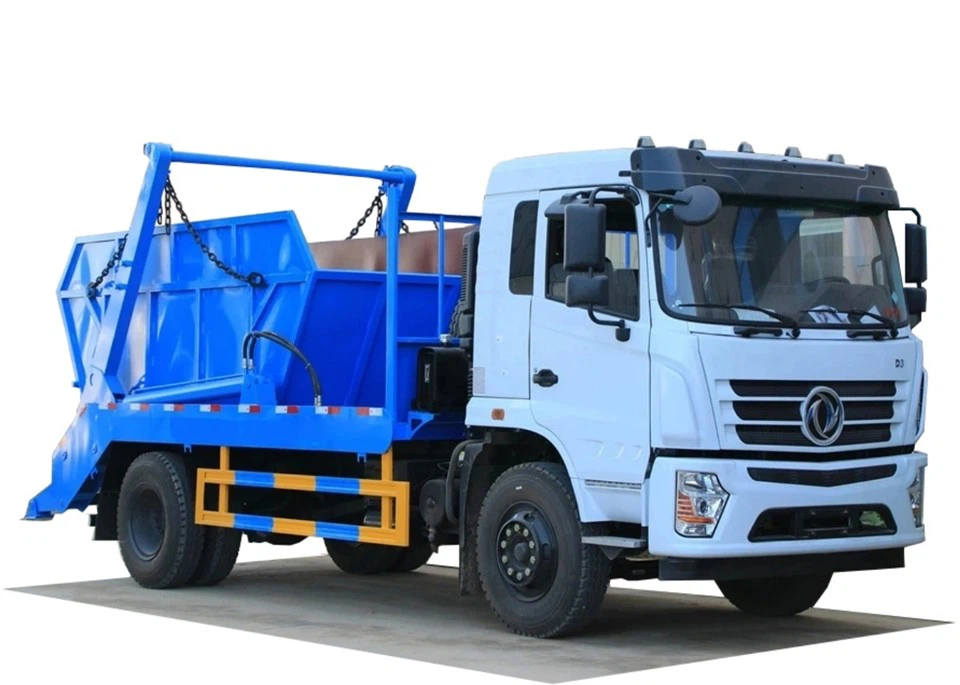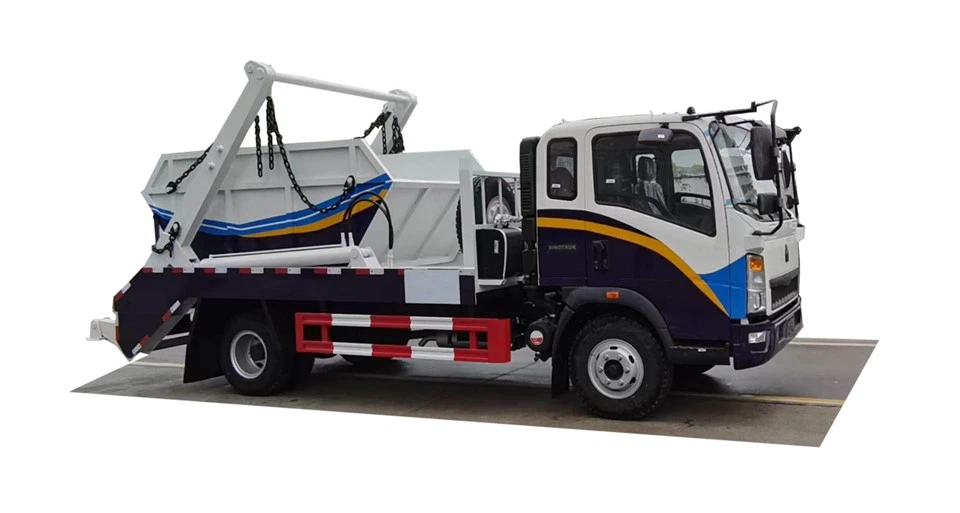Understanding Compactors and Balers: Essential Equipment for Waste Management

In today’s world, waste management is more important than ever. As industries grow and urban areas expand, the need for efficient waste reduction and recycling solutions becomes crucial. Two key machines that play a significant role in this process are compactors and balers. In this article, we will delve into the functionality, types, and benefits of compactors and balers, offering practical examples and tips for optimal use.
What are Compactors and Balers?
Compactors and balers are heavy-duty machines designed for reducing waste volume, facilitating recycling, and optimizing space in waste management processes. They differ in their specific functions and applications, but both are essential in modern waste handling practices.
Understanding Compactors
Compactors are machines that compress waste material to reduce its volume. They are commonly used in various settings, including residential areas, commercial establishments, and industrial sites. Compactors typically can handle a range of materials, making them versatile tools in waste management.
Understanding Balers
Balers, on the other hand, specialize in compressing materials into bales for easier handling and transportation. These bales can be made from cardboard, plastics, metals, and other recyclable materials. Balers are vital in ensuring that recyclable materials are efficiently prepared for processing, reducing the environmental footprint of waste.
Types of Compactors
There are several types of compactors available, each designed for different waste types and operational settings.
1. Stationary Compactors
Stationary compactors are fixed installations that can accommodate larger volumes of waste. These machines are commonly found in industrial settings where space is limited, and waste is produced in large quantities. A stationary compactor is connected to a dumpster, and once the waste is compacted, it is serviced by a waste management company.
2. Portable Compactors
Portable compactors are easily movable and are ideal for businesses that need flexibility. Often used in construction sites or temporary events, these machines allow for easy transport and can be relocated as necessary.
3. Vertical Compactors
Vertical compactors are designed for smaller businesses with limited space. These units work vertically, making them compact and efficient for processing smaller volumes of waste. Vertical compactors are often used for paper, plastics, and similar materials.
4. Pneumatic Compactors

Pneumatic compactors utilize air pressure to compress waste materials. These machines are often used in landfills and large waste disposal sites to reduce the overall volume of waste before it is buried or processed.
Types of Balers
Balers come in different types, serving specific purposes in the recycling process.
1. Vertical Balers
Vertical balers are compact machines ideal for smaller operations. They often have a lower initial investment cost, making them accessible for small businesses. These balers work by manually loading materials and using a hydraulic press to form bales.
2. Horizontal Balers
Horizontal balers are more robust machines designed for larger operations. They can handle high volumes of material and are typically automatic, allowing for greater efficiency in production. Horizontal balers are common in recycling facilities and large industrial plants.
3. Mega Balers
Mega balers are exceptional machines capable of processing very high volumes of materials. Businesses with vast amounts of waste, such as large manufacturing plants or distribution centers, often use these balers.
4. Specialty Balers
Some balers are designed for specific materials, such as textiles or e-waste, ensuring that these unique waste streams are handled correctly. Specialty balers help maintain the integrity of specific materials and aid in efficient recycling practices.
Benefits of Using Compactors and Balers
The adoption of compactors and balers offers several benefits to businesses and the environment.
1. Space Optimization
Compacted waste and bales take up significantly less space, allowing businesses to manage their waste more efficiently. This optimization can lead to lower disposal costs and better organization within facilities.
2. Cost Savings
By reducing the volume of waste, businesses can decrease the number of pickups required by waste management companies, leading to significant cost savings over time. Smaller waste footprints also mean lower landfill fees.
3. Improved Recycling Rates
Balers help improve recycling rates by ensuring materials are prepared correctly for processing. Compressed materials take up less space and are easier to transport, making recycling efforts more efficient.
4. Environmental Protection
Using compactors and balers minimizes the amount of waste sent to landfills, reducing environmental damage. Efficient waste management practices contribute to cleaner communities and a healthier planet.
Practical Examples of Compactors and Balers in Action
To illustrate the effectiveness of compactors and balers, consider the following practical examples in various industries:
Example 1: Retail Stores
Retail establishments often generate considerable amounts of cardboard and packaging materials. By employing vertical balers, these stores can compress cardboard into bales, which are then easily transported to recycling facilities. This practice not only saves space but also demonstrates the store’s commitment to sustainability.
Example 2: Restaurants
Restaurants frequently use compactors to manage both food waste and other recyclables. A stationary compactor can reduce the volume of waste significantly, allowing for fewer pick-ups and less overall disposal cost while supporting local recycling initiatives.
Example 3: Construction Sites
Construction sites create large amounts of debris and waste materials. Portable compactors are deployed to reduce the volume of construction waste onsite, making it easier to transport and dispose of. This not only keeps the site organized but also enhances safety and compliance with regulations.
Example 4: Manufacturing Plants
Manufacturing facilities can benefit from horizontal balers, which allow for the processing of large quantities of plastic, metal, and paper scraps. These bales streamline recycling efforts, enabling manufacturers to recoup material costs and reduce their environmental impact.
Choosing the Right Compactor or Baler
Selecting the appropriate compactor or baler for your needs involves considering several factors:

1. Volume of Waste
Estimate the amount of waste generated regularly. Larger operations typically benefit from horizontal balers or stationary compactors, while smaller facilities may find vertical options more suitable.
2. Type of Material
Determine the types of materials that need processing. If your operation generates only cardboard, a specific baler designed for that material may be more cost-effective.
3. Space Constraints
Consider your available space for equipment installation. For smaller areas, vertical compactors and balers are better suited than horizontal machines.
4. Budget Considerations
Evaluate your budget for initial investment and ongoing maintenance costs. While some machines may have higher upfront costs, their long-term savings can make them worthwhile.

Maintenance Tips for Compactors and Balers
1. Routine Inspections
Schedule regular inspections to check for wear and tear, and address any issues promptly to prevent breakdowns.
2. Cleanliness
Keep machines clean to avoid contamination of recyclable materials and enhance safety. Remove debris regularly to ensure optimal performance.
3. Lubrication
Follow the manufacturer’s guidelines for lubrication to minimize friction and ensure smooth operation of moving parts.
4. Operator Training
Ensure all operators are adequately trained to use the machines properly. Proper training reduces the risk of accidents and equipment damage.
Frequently Asked Questions (FAQs)
1. What materials can be processed with compactors and balers?
Compactors and balers can process a wide range of materials, including cardboard, plastics, metals, textiles, and organic waste, depending on the specific machine type.
2. How often should compactors and balers be serviced?
It is recommended to service compactors and balers at least biannually, although more frequent inspections may be necessary for high-usage machines.
3. Are there safety concerns with using compactors and balers?
Yes, safety training is essential for operators, as these machines can pose risks if used improperly. Always follow manufacturer guidelines for safe operation.
4. Can I rent compactors or balers instead of purchasing them?
Yes, many companies offer rental options for compactors and balers, which can be a cost-effective solution for businesses that don’t require permanent equipment.
5. Do compactors and balers qualify for sustainability credits?
Many compactor and baler systems can contribute to achieving sustainability certifications, depending on local regulations and practices focused on waste reduction and recycling.
6. How do I know if I need a compactor or baler?
If you are primarily looking to reduce the volume of waste before disposal, a compactor is suitable. If you aim to prepare recyclables for processing, consider a baler.
